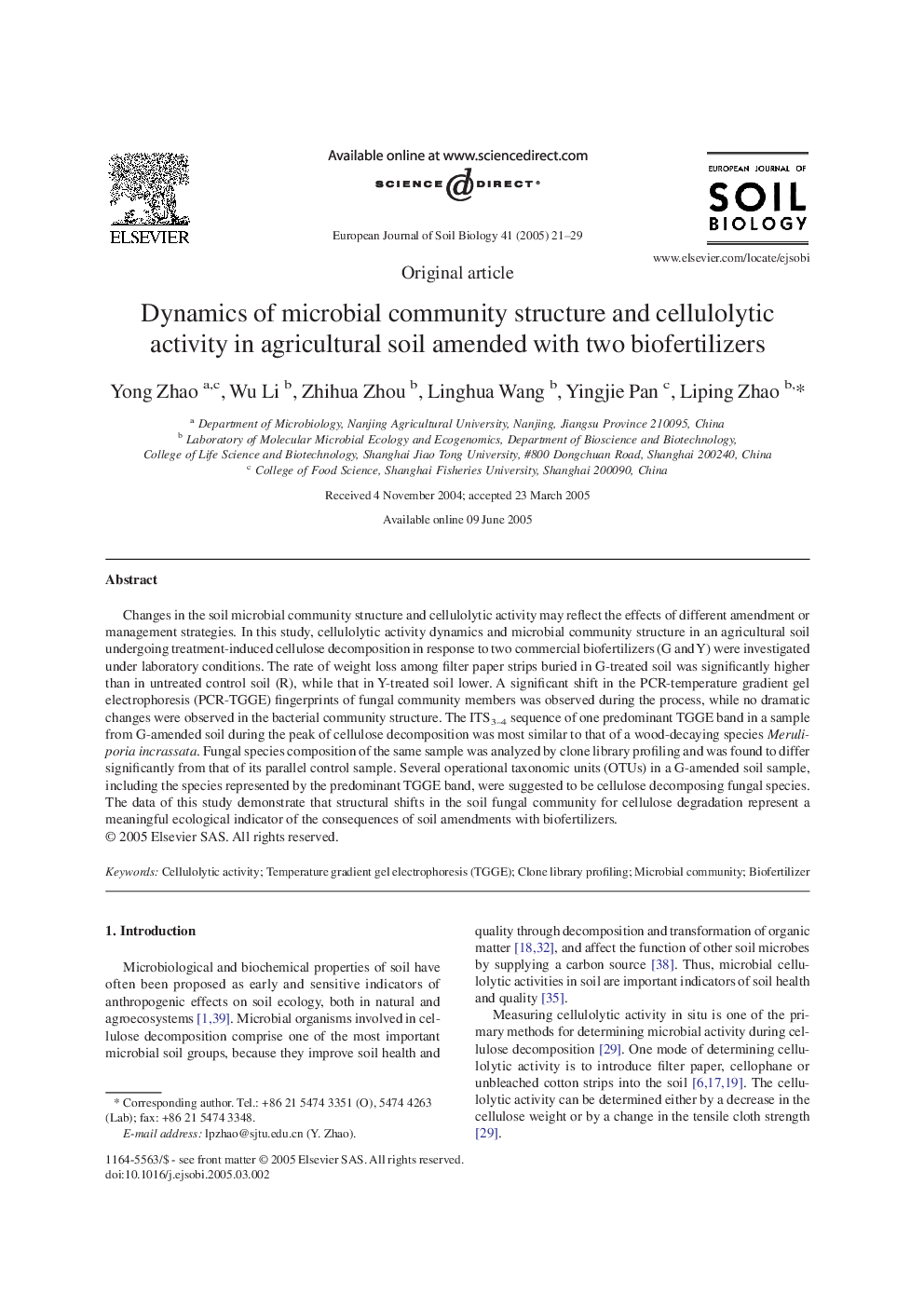| Article ID | Journal | Published Year | Pages | File Type |
|---|---|---|---|---|
| 10110179 | European Journal of Soil Biology | 2005 | 9 Pages |
Abstract
Changes in the soil microbial community structure and cellulolytic activity may reflect the effects of different amendment or management strategies. In this study, cellulolytic activity dynamics and microbial community structure in an agricultural soil undergoing treatment-induced cellulose decomposition in response to two commercial biofertilizers (G and Y) were investigated under laboratory conditions. The rate of weight loss among filter paper strips buried in G-treated soil was significantly higher than in untreated control soil (R), while that in Y-treated soil lower. A significant shift in the PCR-temperature gradient gel electrophoresis (PCR-TGGE) fingerprints of fungal community members was observed during the process, while no dramatic changes were observed in the bacterial community structure. The ITS3-4 sequence of one predominant TGGE band in a sample from G-amended soil during the peak of cellulose decomposition was most similar to that of a wood-decaying species Meruliporia incrassata. Fungal species composition of the same sample was analyzed by clone library profiling and was found to differ significantly from that of its parallel control sample. Several operational taxonomic units (OTUs) in a G-amended soil sample, including the species represented by the predominant TGGE band, were suggested to be cellulose decomposing fungal species. The data of this study demonstrate that structural shifts in the soil fungal community for cellulose degradation represent a meaningful ecological indicator of the consequences of soil amendments with biofertilizers.
Keywords
Related Topics
Life Sciences
Agricultural and Biological Sciences
Soil Science
Authors
Yong Zhao, Wu Li, Zhihua Zhou, Linghua Wang, Yingjie Pan, Liping Zhao,
